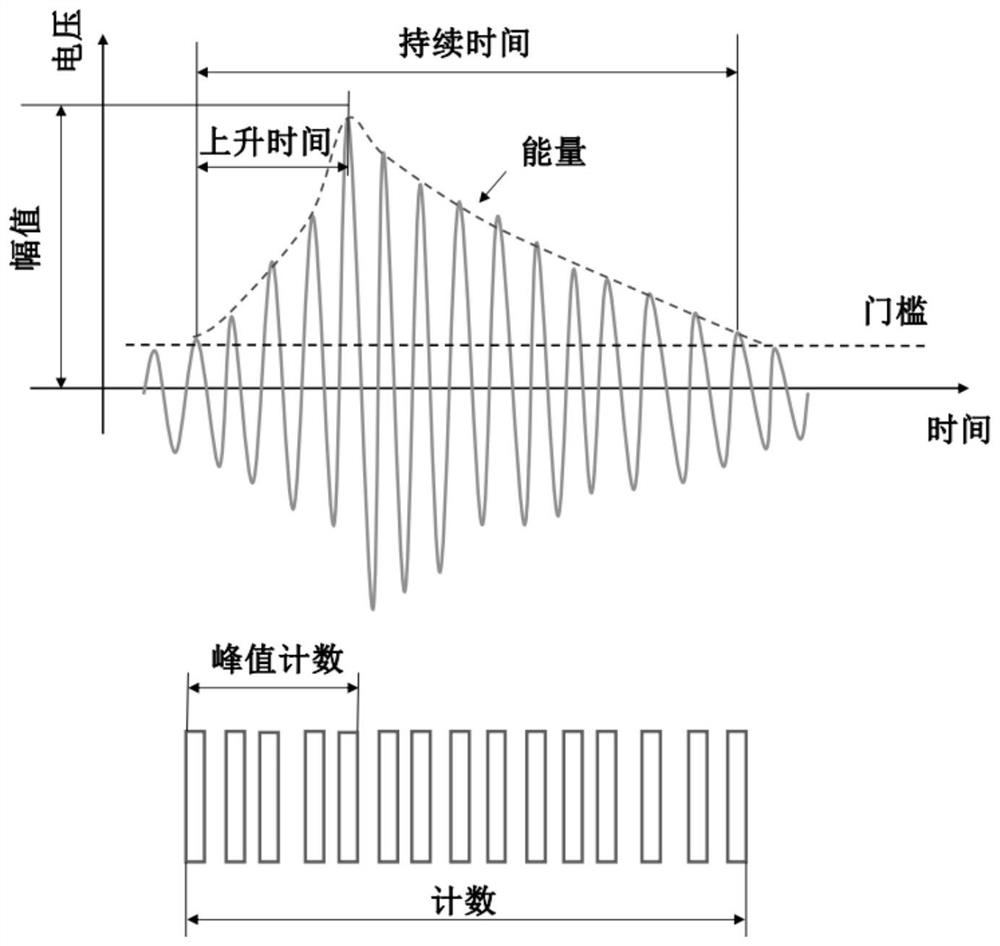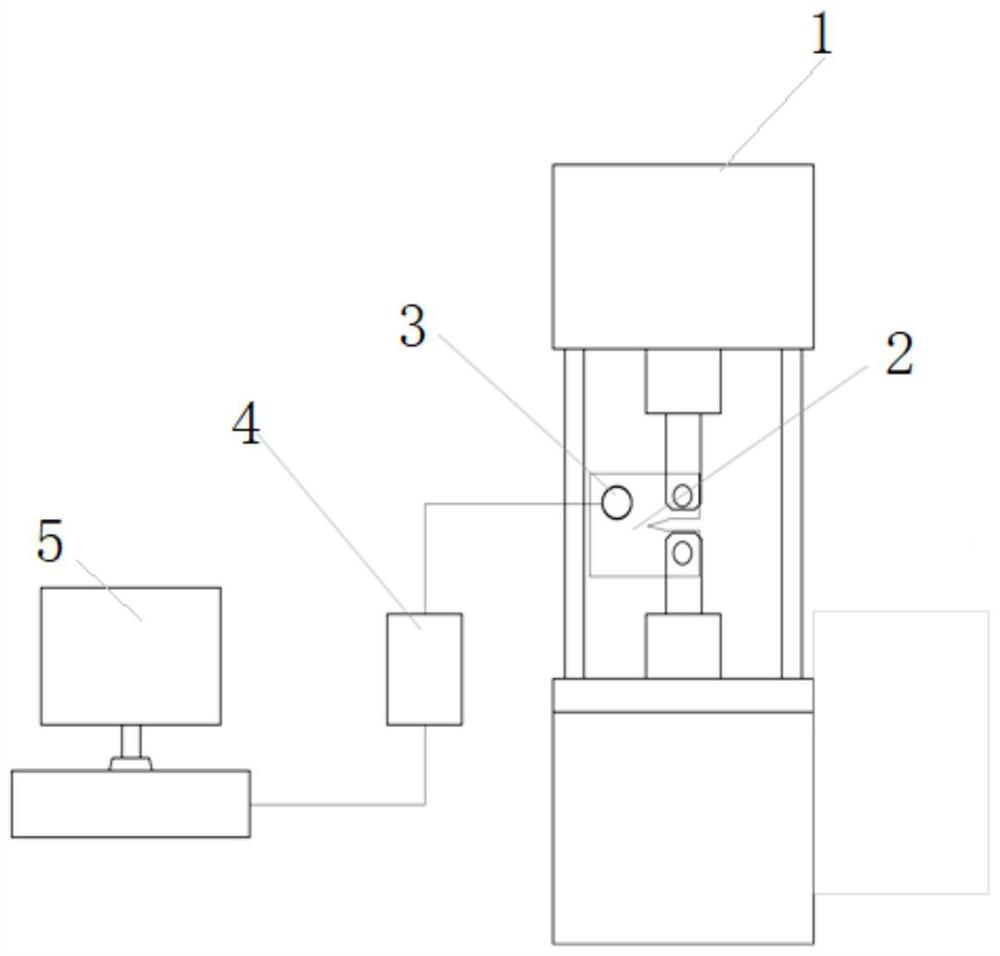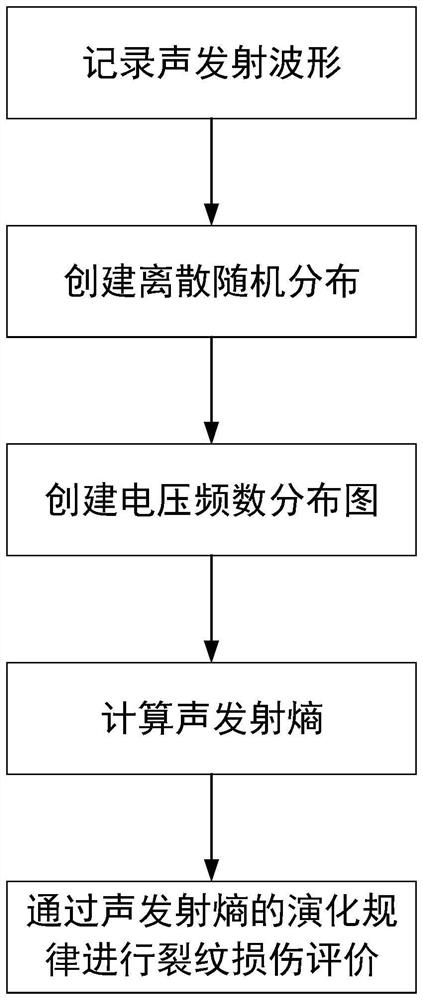Acoustic emission signal feature extraction and crack damage identification method based on information entropy theory
A technology of acoustic emission signal and feature extraction, which is applied in the fields of new acoustic emission parameters, acoustic emission entropy, acoustic emission signal feature extraction and crack damage identification based on information entropy theory, and can solve the problems that cannot reflect the chaotic characteristics of acoustic emission waveform and acoustic emission The monitoring environment is not easy to control, and the damage evaluation of acoustic emission parameters is limited, so as to achieve the effect of important engineering application value, effective identification and evaluation, and excellent anti-noise ability
- Summary
- Abstract
- Description
- Claims
- Application Information
AI Technical Summary
Problems solved by technology
Method used
Image
Examples
Embodiment
[0043] Such as figure 2As shown, in the fatigue crack growth experiment of high-strength steel, the crack starts to grow by loading the fatigue load, and the crack growth size is recorded. At the same time, the acoustic emission sensor is used to record the acoustic emission waveform during the crack growth process, and the waveform data is imported into the computer. to extract feature parameters.
[0044] combined with image 3 ,use figure 2 The acoustic emission data obtained from the monitoring of the crack growth experiment is shown, and the extraction process of the acoustic emission entropy and the damage identification results based on the acoustic emission entropy are described in detail. The specific process is as follows:
[0045] Step 1: Use acoustic emission technology to carry out structural damage monitoring, record acoustic emission waveforms, and obtain the data of each acoustic emission waveform in a sequence of arrival times;
[0046] Step 2: Transform...
PUM
 Login to View More
Login to View More Abstract
Description
Claims
Application Information
 Login to View More
Login to View More - R&D
- Intellectual Property
- Life Sciences
- Materials
- Tech Scout
- Unparalleled Data Quality
- Higher Quality Content
- 60% Fewer Hallucinations
Browse by: Latest US Patents, China's latest patents, Technical Efficacy Thesaurus, Application Domain, Technology Topic, Popular Technical Reports.
© 2025 PatSnap. All rights reserved.Legal|Privacy policy|Modern Slavery Act Transparency Statement|Sitemap|About US| Contact US: help@patsnap.com



